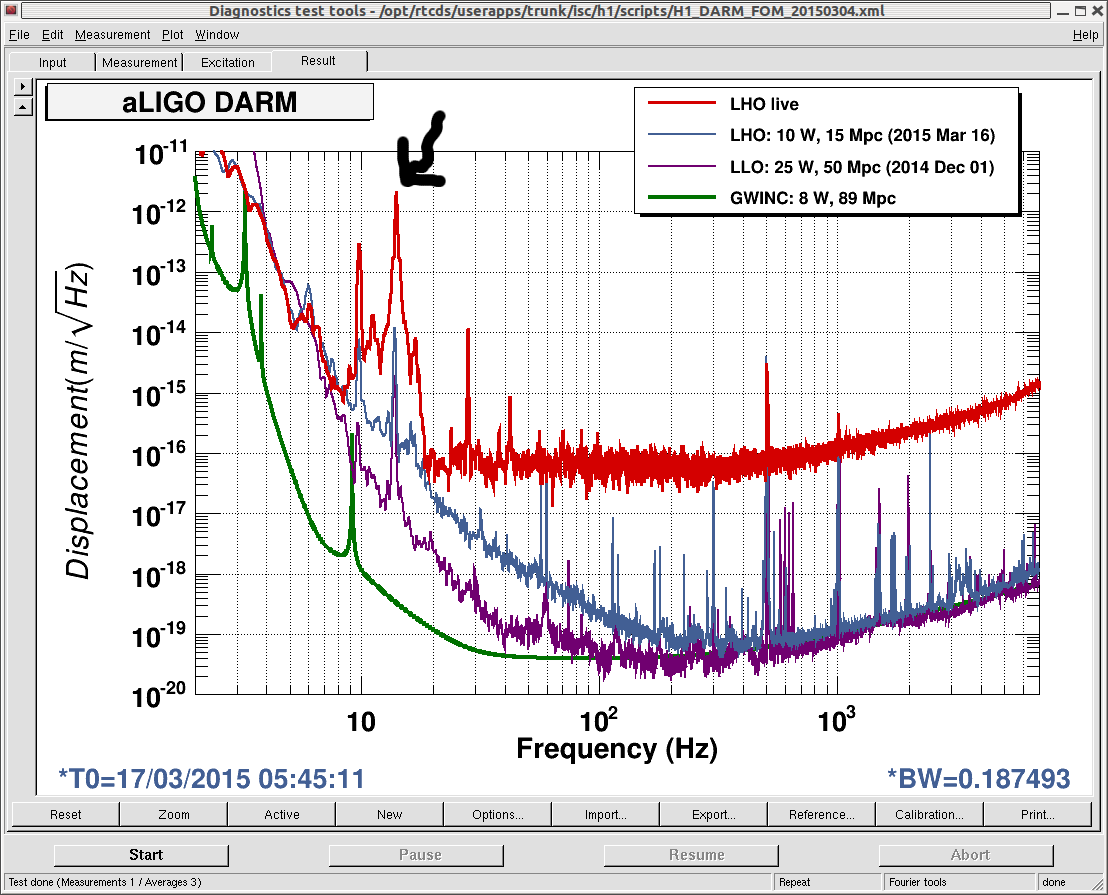Following up on Kiwamu's report, here is the summary page for the coherences during the low noise lock:
https://ldas-jobs.ligo.caltech.edu/~gabriele.vajente/bruco_1110961816/
As usual, here is my digest.
In brief: we need MICH/SRCL subtraction, check SRC angular controls, they might be injecting noise, better tune the IMC longitudinal offset if possible
More details:
- At low frequency, below 5 Hz, the most prominent coherence with with SUS-ETMY_M0_DAMP_L_IN1. However, I'm not sure about the origin of this signal, so it might well be that it's just a DARM control signal fed to the top stage.
- Below about 100 Hz and especially below 30 Hz there is a significant coherence with SRC angular signals, in particular: SUS-SR2_M3_LOCK_Y_IN1 and SUS-SRM_M3_LOCK_Y_IN1. My guess is that the SR2 and SRM control signals are very similar, after the implementation of the driving diagonalization
- MICH is likely the dominant source of noise in the 20-100 Hz region. SRCL is showing large coherence up to 200-300 Hz.
- We still see coherence of SRCL and PRCL signals (and REFL/POP signals) at high frequency, up to kHzs. This is likely due to the IMC longitudinal offset. It seems to me that the situation is slightly better now.
- Coherence is high with IMC angular signals at the 200-400 Hz peaks
- At about 450-500 Hz there is a lot of coherence with ITMX_L2 signals, which I guess is due to the violin mode damping. It might be worth checking if this is re-injecting any noise
- Coherence with intensity noise is not very high, but neither very low. In particular there seems to be a line at 1080 Hz.
P.S. Why are you sending DARM signal into the CARM filter bank?
Ahh you caught on to our hacky audio setup, Gabriele. The OMC-DCPD --> CARM matrix element is enabled so that we can filter OMC-DCPD in the CARM bank before sending it to speakers in the control room. (Actually I'm not sure anyone is using this anymore, we can probably discontinue it.)
Also I have modified the ITMX violin mode damping so that there is 50x less gain at 450Hz. (There is an 8th order butterworth bandpass now, instead of a 4th-order.) This might make the noise a little worse between 480-510Hz, but I think that band is a lost cause anyway.






























